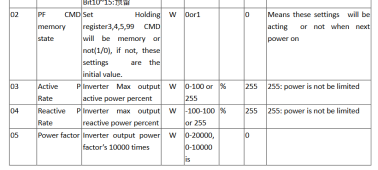You are welcome, I'm really looking forward to the Shelly 3EM as an Eastron SDM630 part.Great! Thank you guys, really nice to have those recordings, and also the analysis already done.
Indeed it looks very weird that Growatt spends the resources/logistics to just repack the genuine version. Too weird. One last risk I see is that they have a kind of periodic check that will popup only after hours of working. We'll see.
With this, my "optip" software can be quickly adapted to also support the "spy" mode for the Eastron ASAP. For now it supports it only as the master in the master-slave communication. Next step was to make this "spy" mode so that optip can just look at what is passing by, with no interference with the inverter which must be the only master on the line.
Finally, I will continue my other software, with first priority on reading from a Shelly 3EM and writing as an Eastron SDM630. => This work will take more time, but I will try to focus on this ASAP!
I will post back here when available.
Thanks a lot for your valuable help!
I'll try to learn Modbus and play around with it.
I think one of the differences between the original sdm630 and the Growatt version, is the extra RS485 output the Growatt version has.
None of the other versions I have seen has two rs485 outputs. I was looking for a MCT version with two RS485 outputs, but Eastron don't make that.




